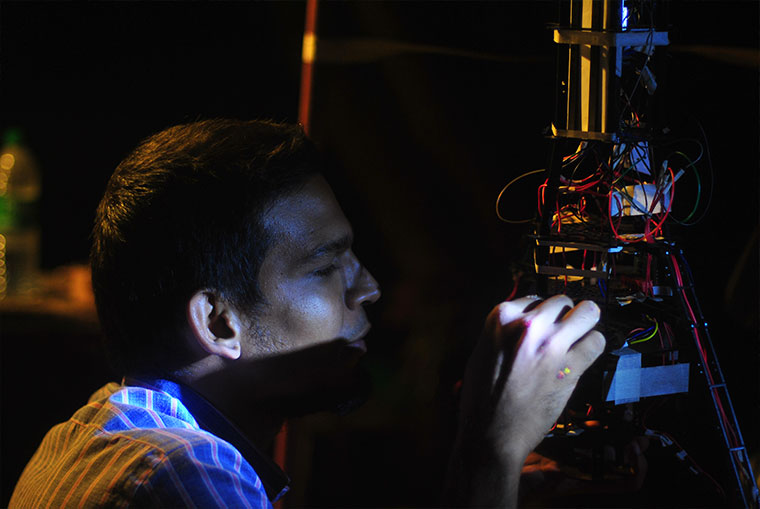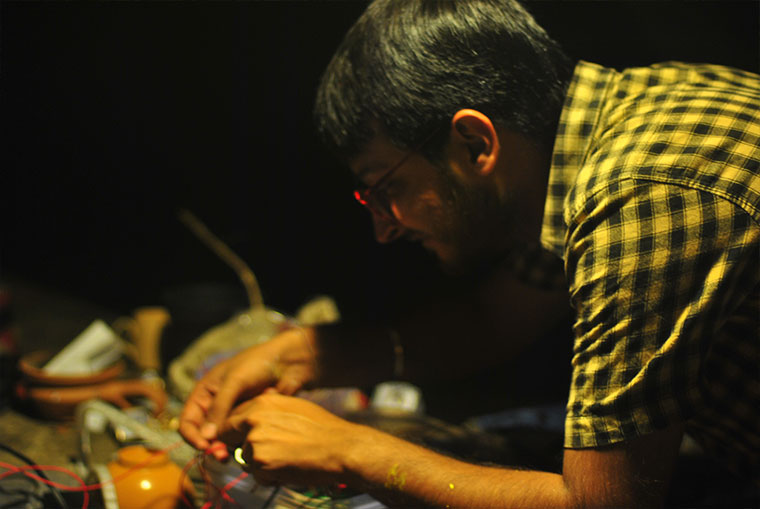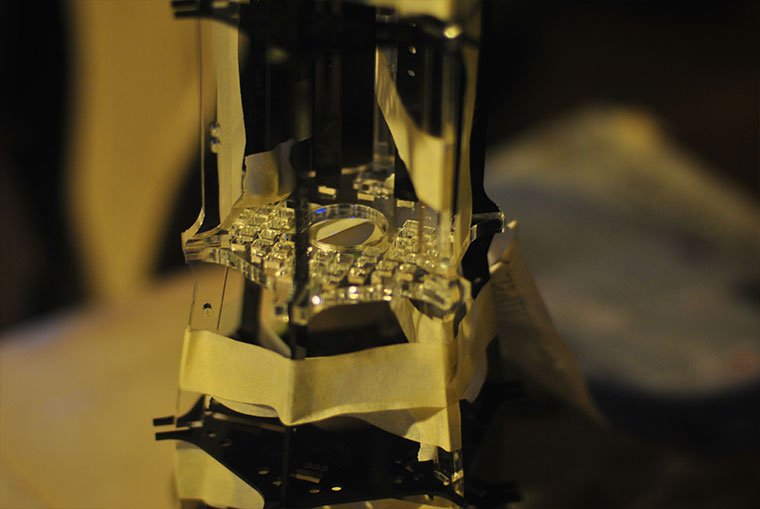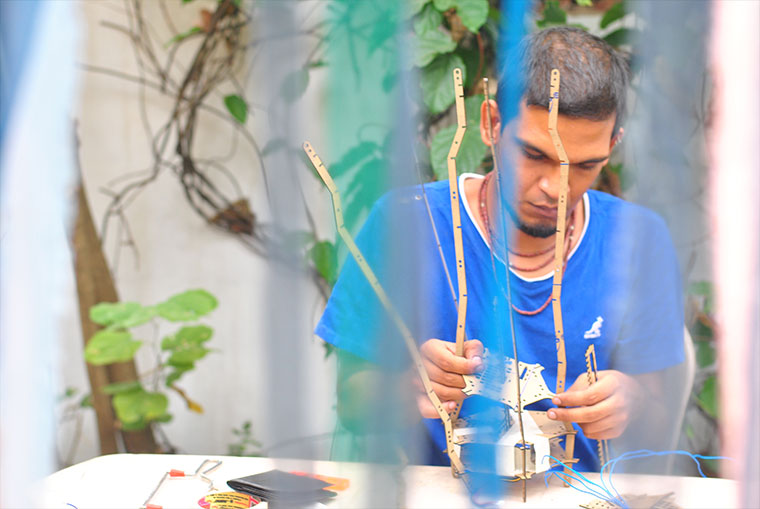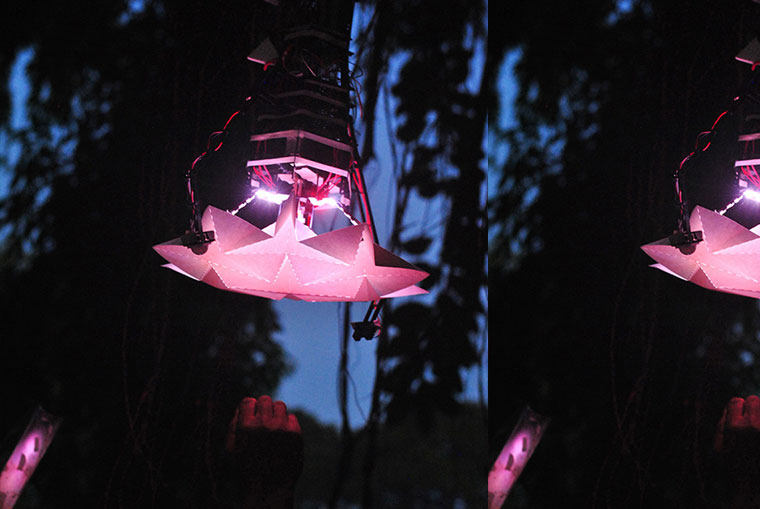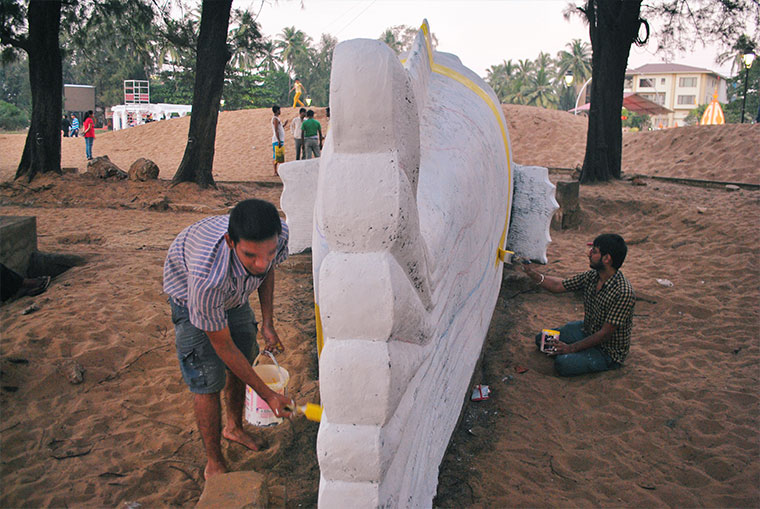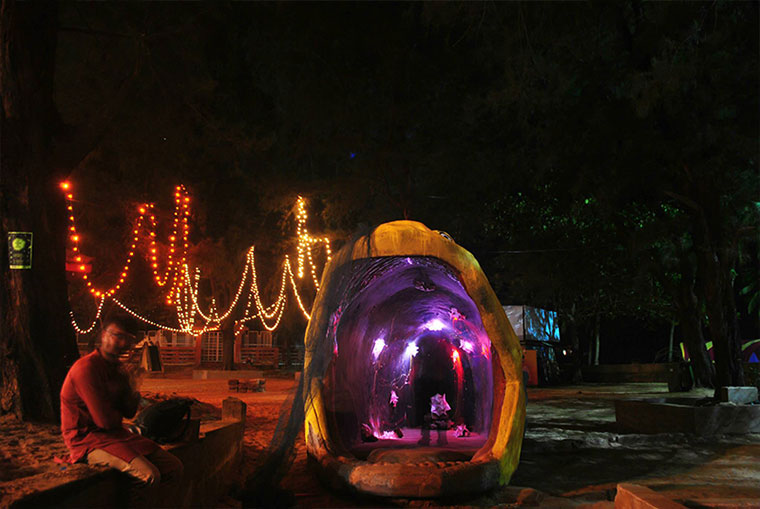Kavak Prakash
ABOUT THE INSTALLATION
“Kavak Prakash” is a light-based interactive installation inspired by the phenomenon of bioluminescence of deep sea creatures. The name is derived from the Hindi terms for fungus (Kavak) and light (Prakash). The imagined creatures were placed and brought to life in dark and unexposed corners of Panjim to simulate an environment where humans and the bioluminescent creatures share the same land.
The fact that certain creatures use light signals and flashes for communication, navigation, mating, defence mechanisms as well as bait, which are also visually stunning, drew the artists to the subject.
The sense of surprise when you discover this interactive installation will hopefully drive people to know more about this organism and the property of bio-luminescence (in some of the most beautiful and endangered creatures) that is no longer seen with the kind of wonderment it deserves.
ABOUT THE ARTISTS
Abhinav Mishra and Vinay Hasija studied New Media Design at the National Institute of Design in Gandhinagar. Abhinav is also an architect from the Centre for Environmental Planning and Technology University (CEPT). Abhinav’s areas of interests lie in New Media Art, Architecture, Environments and Tangible interfaces. Vinay has a background in Electronics and his interests lie in Media Arts, Educational research and creating alternative ways of learning.
Contact: abhinav.m.n@gmail.com & hasija.vinay1986@gmail.com
KNOW MORE
If you ever happen to visit Reethi Beach in the Maldives and see the sand turn a bright, fluorescent blue as the tide washes up on it, don’t panic. No one’s spiked your drink. What you are seeing is bioluminescent dinoflagellates from the waters. Bioluminescence is light produced by a chemical reaction within a living organism. Bioluminescence is a type of chemiluminescence, which is simply the term for a chemical reaction where light is produced. (Bioluminescence is chemiluminescence that takes place inside a living organism.) Bioluminescence is a “cold light.” Cold light means less than 20% of the light generates thermal radiation, or heat. Most bioluminescent organisms are found in the ocean. These bioluminescent marine species include fish, bacteria, and jellies. Some bioluminescent organisms, including fireflies and fungi, are found on land. There are almost no bioluminescent organisms native to freshwater habitats.
Photo Credit : Mitwa A.V.
